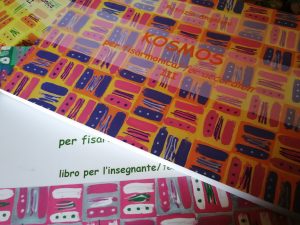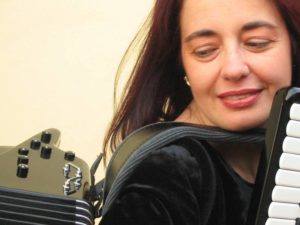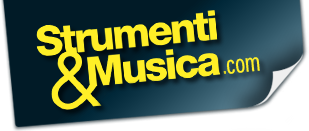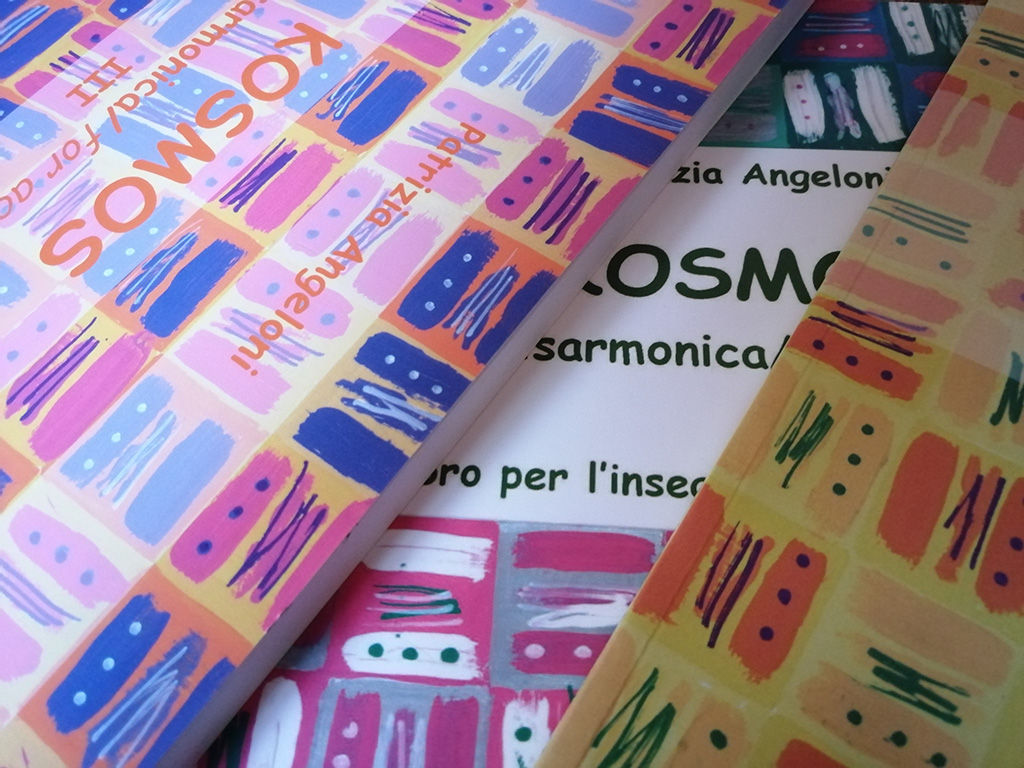Fra tecnica e interpretazione – i “segreti” di Kosmos III
 Il nostro viaggio alla scoperta di Kosmos ci conduce ora al terzo volume, utilizzabile con tutti i tipi di strumento (si veda il primo articolo di questa serie) dagli allievi da circa undici anni in poi come proseguimento del primo e del secondo volume, oppure come libro unico, per iniziare a tutte le età. Si noterà come il volume III possa essere ulteriormente utile come supporto tecnico anche per i non principianti, per consolidare alcune abilità tecniche o per coloro che, pur conoscendo già la fisarmonica, si accostino per la prima volta allo studio delle note singole o ai processi della musica colta contemporanea. I materiali musicali utilizzano linguaggio tonale, ma allo stesso tempo, offrono una ricerca intorno al suono vicina ai processi e alle strutture della musica colta contemporanea.
Il nostro viaggio alla scoperta di Kosmos ci conduce ora al terzo volume, utilizzabile con tutti i tipi di strumento (si veda il primo articolo di questa serie) dagli allievi da circa undici anni in poi come proseguimento del primo e del secondo volume, oppure come libro unico, per iniziare a tutte le età. Si noterà come il volume III possa essere ulteriormente utile come supporto tecnico anche per i non principianti, per consolidare alcune abilità tecniche o per coloro che, pur conoscendo già la fisarmonica, si accostino per la prima volta allo studio delle note singole o ai processi della musica colta contemporanea. I materiali musicali utilizzano linguaggio tonale, ma allo stesso tempo, offrono una ricerca intorno al suono vicina ai processi e alle strutture della musica colta contemporanea.
Kosmos III presenta una serie di sezioni che si occupano delle diverse dimensioni delle competenze del fisarmonicista e permette di lavorare in modo circolare e ricorsivo su tutti i fondamentali tecnici e musicali, in modo da costruire le radici di tutti i possibili sviluppi nelle diverse identità musicali della fisarmonica. All’insegnante si offre (nel libro per l’insegnante), oltre a una serie di suggerimenti metodologici indispensabili alla comprensione del testo, un percorso guidato puntualmente programmato che prevede l’incrociarsi delle diverse sezioni, un percorso allo stesso tempo flessibile, in modo da poter essere riorganizzato in modi diversi in base alla strategia didattica adeguata ad ogni allievo. Vediamo le singole sezioni.
Progetti Musicali, per tutte le acquisizioni tecnico – musicali attraverso la composizione e la improvvisazione. Ogni progetto è dedicato ad uno o più fondamentali tecnico – musicali scelti, che a loro volta chiamano in gioco altri fondamentali e una esperienza musicale completa. I materiali scelti mirano a costruire i prerequisiti essenziali per tutti gli sviluppi futuri e a consolidare aspetti tecnici qualora già parzialmente acquisiti. Ogni progetto presenta alcuni materiali musicali da esplorare e studiare come elementi singoli, da combinare poi liberamente, costruendo il proprio pezzo musicale (si veda l’articolo precedentemente dedicato).
Si noti come i materiali e il progetto didattico di questa sezione costituiscano le basi essenziali per la comprensione e la esecuzione del repertorio concertistico, dalla musica antica alla musica colta contemporanea, rivolte particolarmente verso i fondamenti di pensiero musicale e ascolto adeguati ai repertori concertistici più complessi.
 Note singole si occupa della acquisizione dei fondamentali tecnici delle note singole, sempre incrociando le competenze musicali. Alla “conquista” delle note corrispondono altre due dimensioni correlate: il lavoro percettivo concernente l’orientamento spaziale, esplicitato nel libro per l’insegnante, e la differenziazione delle articolazioni del suono, come ad esempio il legato, gli staccati e i détaché.
Note singole si occupa della acquisizione dei fondamentali tecnici delle note singole, sempre incrociando le competenze musicali. Alla “conquista” delle note corrispondono altre due dimensioni correlate: il lavoro percettivo concernente l’orientamento spaziale, esplicitato nel libro per l’insegnante, e la differenziazione delle articolazioni del suono, come ad esempio il legato, gli staccati e i détaché.
Note singole non si limita alla specificità tecnica, ma si occupa, come del resto tutte le sezioni di Kosmos, di integrare contestualmente tutte le competenze musicali in una esperienza quanto più completa possibile. Anche in questo caso, sarà il libro per l’insegnante ad elencare tutte le indicazioni metodologiche, non riservate solo all’insegnante, ma indispensabili per l’allievo impegnato con consapevolezza nel proprio percorso di studio.
Bassi e accordi precomposti: la tradizionale tastiera sinistra della fisarmonica viene esplorata nella sua struttura, incrociando il necessario orientamento tattile e cinestetico con la lettura ritmica di brevi studi in prescrittura. Successivamente, le tradizionali sequenze rimiche di base vengono impiegate nell’accompagnamento di brevi sequenze melodiche proposte questa volta in notazione tradizionale e formulate, così come tutti i contenuti delle altre sezioni, in modo da favorire il cosiddetto apprendimento “a memoria”. Le sequenze melodiche lasciano poi il posto a brani tratti dalla tradizione popolare europea, in cui vengono impiegati i fondamentali della tastiera “standard” e che chiedono sempre all’esecutore un ruolo creativo.
Nessuna parte di questo articolo può essere riprodotta senza il preventivo assenso dell’autrice.
Angeloni Patrizia, 2018, KOSMOS per fisarmonica. Percorsi integrati per la prima formazione. 8 voll., Youcanprint.
KOSMOS I materiali e percorsi musicali per musicisti fino a 11 anni
KOSMOS II materiali e percorsi musicali per musicisti fino a 11 anni
KOSMOS III materiali e percorsi musicali per musicisti dagli 11 anni in poi
KOSMOS IV repertorio dalla tradizione europea
KOSMOS Libro per l’insegnante
In preparazione (Youcanprint):
KOSMOS appendice al vol. II. In duo con l’insegnante
KOSMOS appendice al vol. IV. In duo con l’insegnante
KOSMOS V a più voci. I fondamenti della polifonia
Su Amazon, Libreria Universitaria, Ibs, Feltrinelli, Mondadori
———————————————————————
 Between technique and interpretation – the “secrets” of Kosmos III
Between technique and interpretation – the “secrets” of Kosmos III
Our journey to the discovery of Kosmos now leads us to the third volume, usable with all types of instrument (see the first article in this series) by the students from about eleven years onwards as a continuation of the first and second volume, or as a single book, to start at all ages. You will notice that volume III can be further useful as technical support also for beginners, to consolidate some technical skills or for those who, while already knowing the accordion, For the first time, they approach the study of single notes or the processes of contemporary cultured music. Musical materials use tonal language but at the same time offer a research around the sound close to the processes and structures of contemporary music.
Kosmos III presents a series of sections that deal with the different dimensions of the skills of the accordionist and allows to work in a circular and recursive way on all the fundamental technical and musical, so as to build the roots of all possible developments in the different musical identities of the accordion. The teacher is offered (in the book for the teacher), in addition to a series of methodological suggestions essential to the comprehension of the text, a guided path punctually programmed that provides the intersection of the different sections, a path at the same time flexible, so that it can be reorganized in different ways according to the teaching strategy appropriate to each student. Let’s look at the individual sections.
Progetti Musicali (Musical Projects), for all the technical acquisitions – musical through the composition and the improvisation. Each project is dedicated to one or more chosen technical “basics”, which in turn call into play other basics and a complete musical experience. The materials chosen aim to build the essential prerequisites for all future developments and to consolidate technical aspects if already partially acquired. Each project presents some musical materials to explore and study as single elements, then to combine freely, building your own piece of music (see the article previously dedicated). Note that the materials and the didactic project of this section are the essential bases for the understanding and performance of the concert repertoire, from ancient music to contemporary music, especially directed towards the fundamentals of musical thought and listening, appropriate to the most complex concert repertoires.
 Note singole (Single notes, well known as B.B.) deals with some of the technical basics of single notes, always crossing musical skills. Two other related dimensions correspond to the “conquest” of notes: the perceptive work concerning spatial orientation, explained in the book for the teacher, and the differentiation of the articulations of sound, such as the legato, the staccatos, the détachés and so on.
Note singole (Single notes, well known as B.B.) deals with some of the technical basics of single notes, always crossing musical skills. Two other related dimensions correspond to the “conquest” of notes: the perceptive work concerning spatial orientation, explained in the book for the teacher, and the differentiation of the articulations of sound, such as the legato, the staccatos, the détachés and so on.
Note singole (Single notes) is not limited to the technical specificity but, like all the sections of Kosmos, it takes care to integrate all the musical skills in an experience as complete as possible. Also in this case, it will be the book for the teacher to list all the methodological indications, not reserved only to the teacher, but indispensable for the students engaged with awareness in their study path.
Bassi e accordi precomposti (precomposed basses and chords, well known as S.B.): the traditional left keyboard of the accordion is explored in its structure, crossing the necessary tactile and kinesthetic orientation with the rhythmic reading of short studies in a graphic pre-writing. Subsequently, the traditional basic rhythmic sequences are used in the accompaniment of short melodic sequences proposed this time in traditional notation and formulated, as well as all the contents of the other sections, in order to encourage the so-called learning by memory. The melodic sequences then give way to songs taken from the European popular tradition, in which the basics of S.B. keyboard are used, always asking the performer a creative role.
No part of this article may be reproduced without the prior consent of the author.
The collection:
Angeloni Patrizia, 2018, KOSMOS per fisarmonica. Percorsi integrati per la prima formazione. 8 voll., Youcanprint. (KOSMOS For accordion. Integrated instrumental training)
KOSMOS I musical material and training plan for musicians up to 11 years old
KOSMOS II musical material and training plan for musicians up to 11 years old
KOSMOS III musical material and training plan for musicians from 11 years old onwards (English/italian text)
KOSMOS IV traditional european repertoire
KOSMOS teaching book (English/italian text)
In preparation, soon to be published (by Youcanprint):
KOSMOS appendix to book II, in duo with your teacher
KOSMOS appendix to book IV, in duo with your teacher
KOSMOS V a più voci. Polyphony basics
On-line stores: Amazon, Libreria Universitaria, Ibs, Feltrinelli, Mondadori, Youcanprint

